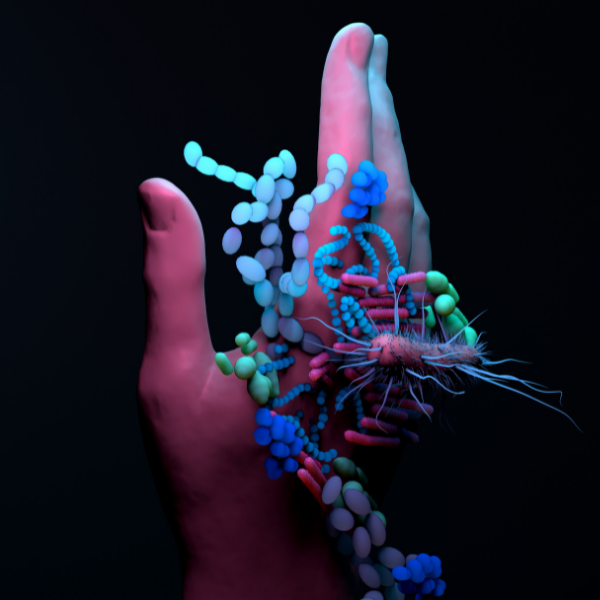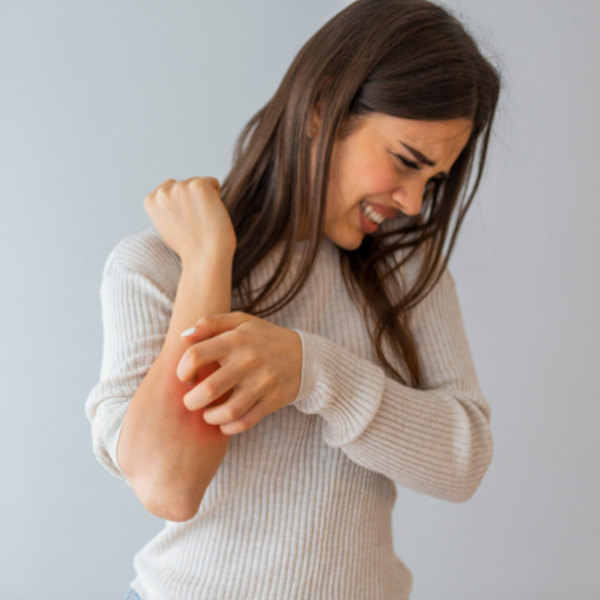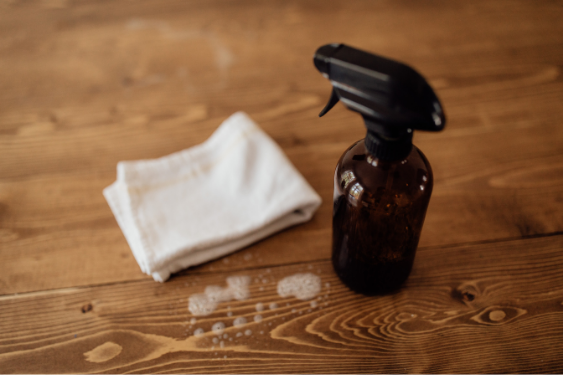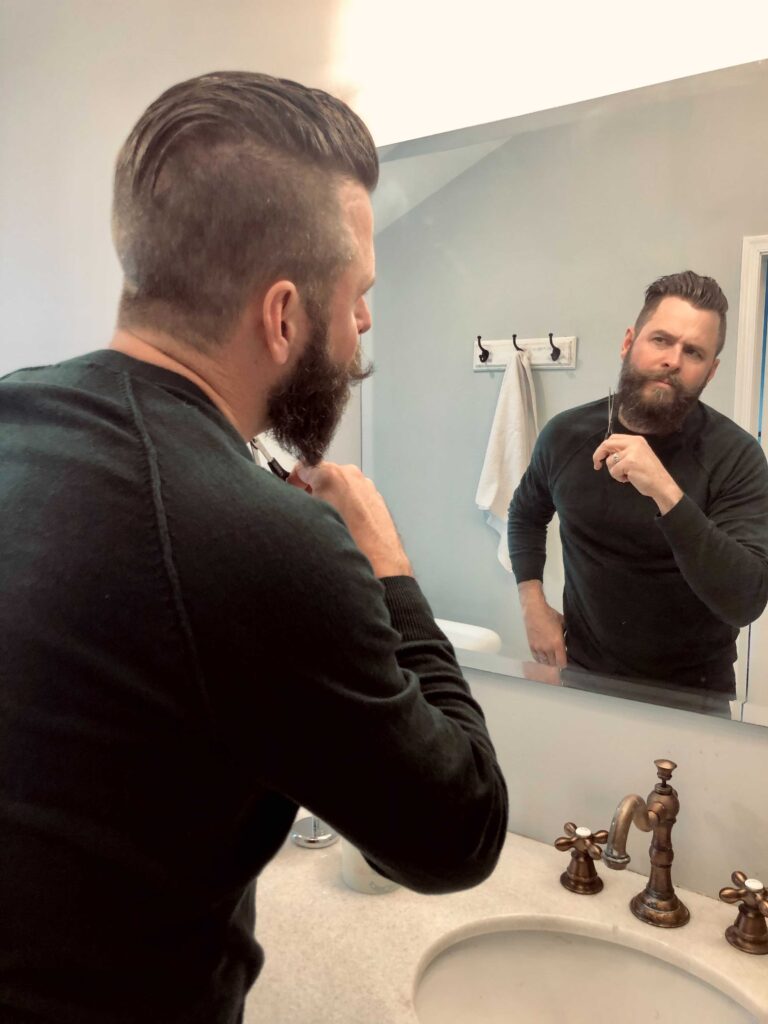Author: everbella
What’s The Connection Between Gut Health And Skin Health?
As research into the gut and the microbiome unfolds, we continue to see more interesting findings that can help us improve our health.
Like, for example, did you know that the health of your gut can affect the health of your skin?
Well, you do now!
Researchers have discovered a clear link between the gut and the skin. As it turns out, the health of the gut can have an impact on inflammation in the skin, along with the many skin conditions which may arise from it. [1]
In today’s article, I’ll go over everything you need to know to understand this connection, as well as how you can help keep your skin clear of rashes, acne, and other inflammatory outbreaks.
What’s the microbiome?

If you need a refresher, don’t worry – I’ve got you covered.
The microbiome is the universe of microorganisms that call our bodies home. Every area of the body has a unique culture of (mostly good) viruses, bacteria, and fungi.
Even your skin has an important microbiome, responsible for regulating inflammation and serving as a barrier between pathogens that are attempting to infiltrate your body on a daily basis. Some of these microorganisms can even help kill certain types of pathogens.
But not all microorganisms that want to live on your skin are good. Some can actively work to eliminate the good bacteria on your skin. When this happens, an imbalance can occur, and this can trigger skin conditions like acne or eczema.
We can help manage this by being easy on our skin so as to not kill off our good bacteria. Another way is through the introduction of probiotics.
What are probiotics?
Probiotics are live bacteria that support the good bacteria in your body and help eliminate the bad bacteria.
Research is showing more and more that the introduction of probiotics to one’s diet can help keep the skin healthy. [2]
Exposure to UV rays from the sun – known as photoaging – is a well-known major contributor to aging skin. Certain probiotics have been shown to protect against this damage. For example, L. rhamnosus – one of the most well-studied probiotic strains – was shown to delay skin damage when exposed to UV rays in mice, as well as increase the amount of immune cells important to skin health. [3]
Research is also showing that probiotics can help slow the aging of the skin in other ways. [4]
For example, a higher skin pH can cause the skin to dry out and create an environment in which bad bacteria can easily grow. Research suggests that probiotics can feed healthy bacteria, balancing the skin’s pH levels. [3]
But still, this all may have you wondering…
How is the skin connected to the gut?
As we learned above, the microbiome includes the microorganisms all throughout your body, working in tandem.
What we didn’t learn above is that:
- The body contains tens of trillions of these microorganisms and…
- These microorganisms make up approximately 70% of your immune system.

Your microbiome is a key regulator of the immune system. Its goal is to maintain homeostasis. This occurs by having your organs and tissue all communicate back and forth with each other. When the bacteria in your gut – where most of your body’s microorganisms live – becomes unbalanced with more bad bacteria than good bacteria, it alters the immune response. This allows for skin diseases like eczema, psoriasis, acne, dandruff, and more to take place. [5]
What’s more is that an imbalance of the gut microbiome can pose other consequences such as digestive disorders, weight gain, poor immunity, and mental health disorders. [6, 7]
L. rhamnosus
As mentioned above, L.rhamnosus is one of the most studied strains of probiotics out there, with hundreds of studies supporting its health benefits.
Regarding the skin, research has shown that L.rhamnosus can support the function of the skin barrier. This is the layer of the skin which keeps the skin hydrated and blocks against unwanted invaders attempting to penetrate the skin. [8]
It’s also been shown to protect skin cells from disease-causing bacteria. [9]
Additionally, one study from 2016 found that it helped reduce acne in adults. [10]
If you’re thinking of adding probiotics to your regimen, L. rhamnosus is the perfect place to start!
5 Natural Homemade Cleaners
Cleaning your home is an important and necessary job. Of course, it’s not always fun, but you don’t want to make things worse by damaging your skin with the products you’re using.
Sometimes even the best store-bought cleaners can get onto your skin and cause irritation and dryness. Gloves don’t make you bulletproof, either. The cleaner can leak into the gloves or simply hit your skin in other spots. Not to mention the ingredients in many of these cleaners can be bad for your eyes and lungs.
That’s why today I wanted to offer some cleaners that you can easily make at home with gentle ingredients. That way, when and if you do get cleaner on your skin, it’s nothing to worry about!
Are citrus and vinegar disinfectants?

Many of the cleaning mixtures below call for a type of vinegar or citrus. These are both great deodorizers and do have some ability to kill bacteria, but they’re not technically disinfectants. If you need to make sure you’re killing all types of bacteria – including pathogens – then you should consider something stronger. But for everyday cleaning, that’s not usually necessary!
Even though these mixtures aren’t as harsh as store-bought cleaners, it would still be a good idea to wear gloves when handling these, especially if you have sensitive skin. The acidity of vinegar and citrus can cause irritation.
Never use vinegar, lemon, or any other acidic cleaner on marble, as it will eat into the stone.
1. Scented all-purpose cleaner
Here’s what you’ll need for this fresh-smelling all-purpose cleaner:
- One part white vinegar
- One part water
- Lemon rind
- Rosemary sprigs
Combine all ingredients into an empty spray bottle, shake, and let infuse for about a week before using. Once done, you can use this cleaner to wipe down garbage bins, wall stains, hard water stains, and more.
2. Kitchen cleaner and deodorizer
Here’s all you need for this simple, yet effective, kitchen cleaner:
- 4 tablespoons baking soda
- 1 quart warm water
This mixture is great for kitchen counters, appliances, and the inside of your fridge. To deodorize and create a nice shine, rub the above ingredients into the surface as a paste. Then, rinse and buff dry.
3. DIY glass cleaner

Here’s what you’ll need for this quick and easy glass cleaner:
- 2 cups water
- ½ cup white or cider vinegar
- ¼ cup 70% concentration rubbing alcohol
- 1-2 drops orange essential oil (optional)
Combine these ingredients into a spray bottle and use them on your windows. Due to the alcohol, it may be best to wear gloves, especially if you have sensitive skin.
Don’t wash your windows on a hot, sunny day, as the cleaner will quickly evaporate and leave streaks. If you’re cleaning mirrors, spray the solution onto a cloth or paper towel before wiping.
4. Homemade brass cleaner
Easily put together this polishing cleaner with the following ingredients:
- White vinegar or lemon juice
- Table salt
For this one, dampen a sponge with the vinegar or lemon juice, then sprinkle on the salt. Lightly rub the sponge over the surface – this could work for decor, door handles, or bathroom fixtures – and then rinse well with water. Dry it off with a soft cloth right away.
5. Natural marble cleaner
Here’s what you’ll need for this simple solution:
- 2 drops gentle dish soap
- 2 cups warm water
Mix these two ingredients and then soak them up with a sponge. Use the sponge to clean marble, rinsing well after, and drying with a cloth immediately.
Natural cleaners
Chances are, you have many of these ingredients in your home already. So, not only are these cleaners better for your health, they’re easier on the wallet as well!
Remember, it’s crucial to protect your skin from not just the outside, but the inside.
Complete Collagen+ can help with that.
>>> Click here to learn how Complete Collagen+ can help strengthen your hair, skin, and nails
Collagen And Coffee
If you know anything about me, it’s that I LOVE putting Complete Collagen+ in my coffee. With the caramel taste, it creates a delicious drink that’s sugar free!
But believe it or not, I’m not the first one to come up with putting collagen in coffee (it just hasn’t always tasted so yummy).
Collagen itself has a neutral taste, so adding it to foods and beverages to give them an extra boost is a popular choice for many looking for better skin, nails, hair, joint health, and energy levels.
But this has some people wondering…
Does the hot coffee impact the collagen peptides?
Collagen and heat
The main concern with collagen and coffee is that the heat of the coffee will destroy the quality of the supplement.
Generally speaking, when proteins are exposed to high temperatures or acidic and alkaline solutions, they become denatured and their structures can change slightly.
This does include collagen. But you have two reasons to not worry…

The first reason is because of the amount of heat that collagen can endure before breaking down.
Researchers exposed collagen proteins to the extremely high temperatures of 302–788ºF (150–420ºC) and found that the collagen didn’t even start to degrade until 302ºF (150ºC). [1]
The boiling point for water is 212°F (100°C) and coffee is typically served at 195–205ºF (90–96ºC) – much lower temperature ranges.
But if you still weren’t feeling fully confident in this putting-collagen-in-your-coffee business, then here’s another reason you can put your mind at ease…
Here at EverBella, we wrap our collagen in lipids called micelles and liposomes. These are fatty molecules that are natural to your body. First, the collagen is wrapped in a micelle, which serves the purpose of assisting the collagen through the intestinal wall and into the bloodstream. This micelle is then wrapped in a liposome, which protects the collagen from breaking down in the digestive tract before it can get to the intestinal wall.
These liposomes aren’t invincible to heat, but they don’t begin to break down unless boiled.
So, long story short, as long as you’re not drinking your coffee while it’s literally boiling (which I hope for your sake you’re not!) then you don’t have to worry about losing any of the collagen’s potency by adding it to your coffee.
When you add Complete Collagen+ to your coffee, not only are you providing your body with one of its most needed proteins, you’re making your coffee taste delicious!
>>> Click here to see how else you’re supercharging your coffee with Complete Collagen+
Think of it this way…
You’re having coffee anyway. You may as well add some beneficial stuff to it!
References and resources
8 Surprising Things That Are Draining Your Energy

Do you feel especially zonked at the end of each day? Or do you feel tired throughout the day no matter how much sleep you get?
This could be happening for several reasons. One of them could be that you’re doing (or not doing!) something that’s just draining the energy right out of you.
In today’s article, I’m going to go over 8 things that could be negatively impacting your energy levels and preventing you from being at your best every day!
1. Too much caffeine
This one may or may not be surprising. Caffeine is supposed to give you energy, right? Well, of course! It can make you feel like you can achieve anything.
Well, except for sleep…
Research has found that having coffee even six hours before you hit the hay can impact not just how long of a sleep you get, but the quality of your sleep. [1]
Now, I’m not saying ditch the coffee. I’m not a monster. But experts do recommend not having a cup of joe – or any caffeine – after 2PM.
2. Multitasking
Nothing feels better than knocking out a bunch of tasks at the same time. It’s called multitasking. This term comes from the 1960s, when computers were first being developed, to describe the capabilities of a computer.
And that’s just it…
Computers can multitask, but we can’t. Our brains can’t actually focus on two things at once. So, when you’re doing what you think is multitasking, you’re actually switching between the two tasks.
This constant re-focusing exhausts the oxygenated glucose in your brain, making you tired, and actually less efficient at completing your tasks. [2]
3. Dehydration
You know those people that walk around reminding you to drink water?
Listen to those people!
Especially if you feel tired. Research shows that even mild dehydration can plummet energy levels, especially in women. [3]
Don’t wait until you’re thirsty to have some water. At that point, you’re already dehydrated. Casually drink water throughout the day, setting an hourly alarm to have a few gulps if you have to!
Hydration is needed for your body to function properly. It’s a relatively easy way to help keep yourself healthy and energized!
4. Complaining
Sure, we all complain about things here and there. But here’s the thing about complaining… it changes nothing.
Well, almost nothing. Researchers have found that complaining, criticizing, and focusing on the bad can have negative impacts on your productivity.
It was found that those who focused on the positives and, instead of complaining, looked for ways to improve things were more protective and energetic. Those who simply complained were much more drained at the end of each day, with nothing more to show for it. [4]
5. Going online before bed

Before bed, it’s best to unwind. Something like knitting, reading, or listening to a podcast are good options. But bringing your phone, tablet, or laptop to bed are not good options.
The blue light from these devices can negatively impact your sleep-wake cycle. It does so by interrupting the release of melatonin – the hormone that tells your body it’s time to wind down and go to sleep. [5]
As a result, it can take you longer to fall asleep, and once you do, your body may not properly go through the sleep cycles, such as REM. This leaves you groggy and tired the next day.
Try to avoid these at least an hour before bed. And if you do need to be on a device right before sleep, most of them should have a blue light filter, or “night shift mode” that you can toggle on. Alternatively, you can find a blue light filter for the screen or blue light filter glasses.
6. Skipping the gym
It doesn’t have to be at an actual gym, but if you’re skipping your workout, it may be tiring you out.
Wait, what?
Yeah, it doesn’t seem to make sense until you look at the science. Researchers state that this has to do with the mitochondria in our cells – the less energy you expend, the less energy they produce. [6]
A 2013 study out of the University of Georgia found that just one bout of exercise increased energy levels. Fatigue decreased mostly after low-to-moderate exercises which lasted at least 20 minutes. [7]
So, even if you’re not feeling up to it, getting your exercise in – even just a light one – can help boost your energy levels for the day.
7. Slouching
Did you know that slouching can drain your energy levels? Well, you do now.
Poor posture can have many negative effects on your health like decreasing circulation, causing headaches, and increasing pressure on the joints.
But research shows that it can also tire you out. Poor posture and the consequences of it require more energy to compensate for the misalignment of the spine. [8]
It can be hard to remember at all times, but be mindful of your posture while standing and sitting. If you work at a desk, consider investing in an ergonomic chair that can support your back and ensure that your screen is at eye level so you’re not looking downward all day.
8. A deficiency
If your body isn’t getting the nutrition it needs, you will certainly feel the effects.
Trust me, I’ve been through this.
Your body needs vitamin B12 to form red blood cells. These cells carry oxygen throughout the body, delivering it to the cells that need them. Which is all of them.
So, if you’re low on vitamin B12, it’s like suffocating your cells.
This can lower their output…
And greatly impact your energy levels.
To learn more about this click here.
References and resources:
- https://www.psychologytoday.com/ca/blog/sleep-newzzz/201312/new-details-caffeine-s-sleep-disrupting-effects
- https://www.sciencealert.com/how-multitasking-drains-your-energy-reserves-and-what-you-can-do-about-it
- https://today.uconn.edu/2012/02/even-mild-dehydration-can-alter-mood/
- https://www.thecut.com/2015/03/being-negative-at-work-will-drain-your-energy.html
- https://www.brighamandwomens.org/about-bwh/newsroom/press-releases-detail?id=1962
- https://www.webmd.com/fitness-exercise/features/exercise-for-energy-workouts-that-work#1
- https://news.uga.edu/uga-kinesiology-exercise-boosts-energy/
- https://health.usnews.com/wellness/slideshows/10-ways-poor-posture-can-harm-your-health?slide=4
How To Care For The Skin Beneath A Beard
Men like to rock beards for many reasons. It could be for confidence and looks, or comfort and warmth. If you have a beard, or you know someone who has a beard, you know that it can take some upkeep.
But what about the skin underneath?
The unfortunate truth is that facial hair can absorb moisture, taking it away from the skin. This can lead to dryness or itchiness. What’s even worse is that facial hair can catch dirt and oil near the hair follicles, clogging pores and causing acne.

But that doesn’t mean you shouldn’t grow a beard. If you follow the tips below, you can keep the beard and have healthy skin beneath (which can help make your beard even nicer)!
My husband does these and, well, just look at his fabulous beard! >>>
Clean thoroughly and often
Don’t worry, I’m not accusing you of not washing your beard! But it is crucial to wash it extensively at least once a day.
In the shower, let the steam of the warm water loosen the hairs of your beard, then give it a nice wash with a facial scrub.
If you’re using beard oils, it’s a good idea to do a wash again at night, as these oils can get trapped around the hair follicles and lead to inflammation.
Treat your face like your scalp
Alternatively, if your beard is extra thick and/or extra long, just treat it like you do the hair on your head!
In the shower, use a gentle shampoo and conditioner. Be sure to work it into the skin so that you can free up those trapped oils and dirt.
Exfoliate regularly (but not too much)
When you shave, you remove the top layers of the skin. This acts in place of exfoliation, removing dead skin cells, allowing your skin to be cleaner, at lower risk of clogged pores, and better able to absorb hydrating products.
But when you have a beard, you’re not shaving this away. As a result, it can build up. This is why it’s important to exfoliate.
To do so, get your beard and the skin beneath it wet with warm water. Then, in a circular motion, apply an exfoliating face wash (a cream-based cleanser with abrasive ingredients designed to actually scrape away the dead skin) to the skin beneath the hair.
Be sure to only exfoliate 2-3 times per week. Doing so more than this can risk the skin becoming too sensitive and vulnerable to damage.
Moisturize after washing
Now that your skin is clean, exfoliated, and clear of built up oils and gunk, it’s time to hydrate!
Find a moisturizer that’s free of fragrances, parabens, and other ingredients that can harm your skin. Work it into your beard and the skin beneath until absorbed.
Inside and out
Like the hair on your head, your beard is fueled by the nutrients and compounds you consume.
That includes collagen.
If you’re taking care of your beard on the inside and the outside, you’ll have the best beard in town!
28 Skincare Myths
Your skin is your body’s largest organ. As such, its health is important. Not only does it affect the way you look, but your skin has crucial jobs such as tipping off the immune system that there’s an issue – like an influx of pathogens – and managing inflammation.
If you want your skin to be as healthy as can be, it’s best to know as much as you can about caring for it. But there are a lot of myths and half-truths floating around out there. So, to make sure you’re not mistakenly doing anything that can actually harm your skin, today I’m going to cover 28 skincare myths and how much truth they carry.
1. Hot water is good for your skin – False
Whether it’s your face or your body, washing with hot water strips even more oils and natural moisturizers away from your skin than a simple wash is already doing. The result is dry and itchy skin – or that tight feeling. The skin on your face is especially sensitive to hot water, so if you’re planning on having a hot shower, wait to wash your face with warm water instead. And, as always, be sure to moisturize after.
2. Only teenagers get acne – False
It’s true that elements of puberty, like an increased production of oil in the skin (sebum), can cause acne. But there are many other causes of acne as well which can occur or stick around regardless of age.
3. Cucumbers will eliminate the bags under your eyes – Half true
While it’s true that placing a cool, moist cucumber over your eyes can help reduce puffiness, compressing anything that’s cold over your eyes will have the same effect.
4. Face exercises will remove wrinkles – False
Unfortunately, once you get wrinkles, they’re not going anywhere. Though you may be able to minimize their prominence through certain means, stretching the skin of the face will likely only make them worse or even create new wrinkles.

5. Eating carrots turns your skin orange – True
If you ate a dozen carrots every day for several weeks, there’s a chance that your skin will actually develop an orange hue. This is due to the carotenoid in carrots called beta-carotene – an antioxidant that gives carrots (along with other fruits and veggies) their color. But because it takes so much beta carotene to happen, this phenomenon is quite rare.
6. Pores open and close – False
Contrary to popular belief, steam won’t open your pores to let them breathe. Pores don’t open and close, but they do loosen.
7. Chocolate causes acne – False
As far as we know, no food on its own is going to cause acne. However, aspects of a diet can. Too much sugar – from any source – can contribute to an acne breakout.
8. Lips don’t sunburn – False
Just like your skin, the lips can be damaged by the sun’s UV rays. In fact, they’re even more vulnerable than your other skin. Be sure to use a lip balm or a product that offers SPF protection.
9. Indoor tanning is safer than being in the sun – Mostly false
The UV rays in tanning beds are no less serious than the rays from the sun, and some even argue that it can actually be more harmful. However, the good thing is that you have more control in a tanning bed over intensity and duration.
10. Waterproof sunscreen lasts all day – False
In terms of how long it lasts, waterproof sunscreen isn’t all that different from the regular stuff. If you plan on being outside all day, be sure to reapply your sunscreen once every few hours.
11. Acne is genetic – True
Though there hasn’t been a specific gene found that causes acne, it’s widely accepted by researchers that acne runs in the family.
12. Toothpaste will kill a zit – Half true
It seems like an old wives tale, but it could actually work! Some toothpastes do contain ingredients that are found in acne treatment creams. However, the problem is that they can also contain ingredients that may harm the skin, worsening the inflammation.
13. SPF protection is all the same – False
When applying sunscreen, you want protection from both UVA and UVB sun rays. These can both damage the skin in different ways. However, some products – like makeup, for example – may only offer protection from UVA or UVB, not both. Be sure to check the label and see which kind of protection your products are offering.
14. Makeup makes you age faster – Mostly false
This one does depend on the quality of product you’re using, but most makeup can actually be beneficial for your skin. If you wear good quality makeup as directed, wash it off nightly, and follow a proper skincare routine, there’s no reason why makeup should harm your skin.
15. The sun can treat acne – Half-true
Sun exposure may be able to reduce inflammation on the skin. However, this is because the sunlight suppresses the immune system and the immune cells in the acne. This short-term fix is not recommended due to the long-term consequences, like reduced immunity and increased skin aging.
16. It’s good for skin to feel tight – False
Many people may think that tight skin means no wrinkles. In reality, this means that your skin is too dry and void of its natural protective oils.
17. You only need to wear sunscreen on sunny days – False
As much as 80% of the sun’s UV rays can penetrate clouds. If it’s light outside, the sun’s rays are getting through. No matter the weather, if you’re going to be outside for a long period of time, be sure to protect yourself!
18. Men don’t need to moisturize – False
Skin is skin, regardless of who is wearing it. Moisturizing helps the skin from getting too dry, which can lead to irritated or cracked skin.
19. You can sweat out toxins – False
Your body mainly uses the kidneys and liver to clear out toxins. Sweat is predominantly water, with traces of salt and fat, and its purpose is to regulate body temperature.
20. You should pop pimples – False
Though you may be able to do this in a careful manner, it’s generally recommended to not pop those whiteheads. Yes, nobody wants to show the world one of these, but popping it can lead to scarring and may allow bacteria to get inside, where more problems can arise.
22. Moisturizer reverses wrinkles – False
Using a moisturizer won’t remove any wrinkles you already have. Though, it can help keep your skin hydrated as you age, making the wrinkles less pronounced. It may also prevent or reduce future wrinkles.
23. Giving a cut some air will help it heal faster – False
Of course, always listen to your doctor’s advice on managing any wounds you may have. But removing the bandage to let it breathe may cause it to dry out, which slows the healing process.

24. Frogs cause warts – False
Okay, I know this one isn’t as pressing, but just in case, I wanted to bring it up! Despite their own bumpy skin, frogs do not cause warts. Warts are caused by a virus carried in humans, not frogs.
25. Stress causes acne – True
While not the only cause, it’s certainly one of the reasons you may see acne in adulthood. Stress can cause a hormonal imbalance that triggers breakouts.
26. Shave against the grain – False
Especially for sensitive skin, it’s best to shave in the direction that your hair grows. Though shaving against the grain may give a closer cut, it may pull at hairs before they get cut, causing irritation and ingrown hairs.
27. Butter heals burns – False
While the idea is to keep the skin moist, applying butter right after a burn may cause the fat to lock in the heat and cause damage. If you burn yourself, it’s best to apply cool water to the affected spot immediately. However, if the burn appears to be really serious, cover it in a clean cloth or towel and head to the emergency room, as even cool water could cause further damage to a severe burn.
28. Wearing a hat causes hair loss – False
The idea here is that a hat “suffocates” the hair and stunts growth. But hair gets the oxygen it needs to grow through the red blood cells via hair follicles. Hair loss is largely genetic or due to a deficiency.
Skin myths
I hope that these 28 skin myths help you take better care of your skin. Remember, before you do something to your skin, be sure to know all the details. Everything you do to your skin on each day adds up and impacts it – whether you see it straight away or not.
If you’re unsure about something, do a quick search on the internet first!
Want to know the details of collagen?
